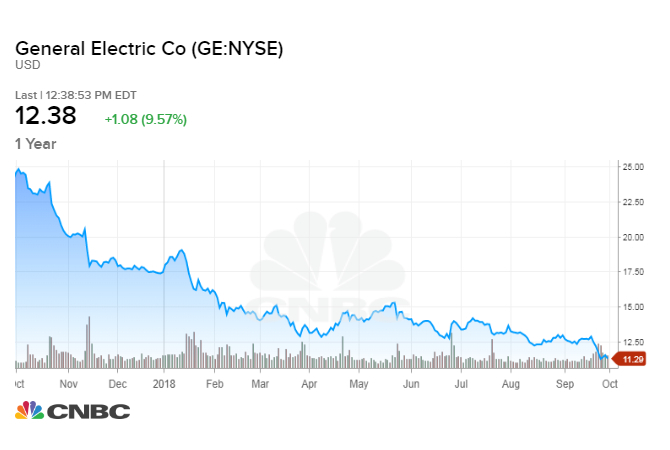The General Electric board's frustration with the slow pace of change at the troubled industrial company led to the ouster of CEO John Flannery, but the problems at the heart of its power business defy a quick solution.
GE on Monday announced it would replace Flannery with former Danaher Corporation CEO Lawrence Culp. The 55-year-old executive now faces the challenge of steering GE through a period of weak demand for its power plant equipment.
At the core of the company's problems is its failure to forecast a downturn in demand for its turbines, the titanic machinery that powers natural gas and coal-fired power plants. That failure left GE with too much capacity in a market that is cooling off amid booming demand for renewable energy.
In its latest quarter, revenues in the Power sector fell 19 percent, while profits were down 58 percent. Orders for new equipment were down 26 percent at $7.4 billion.
GE does not see demand rebounding soon. The market for gas powered turbines will total less than 30 gigawatts this year and remain stagnant through 2020, GE forecast. Two years ago, the market for gas turbines stood at 48 gigawatts.
In light of that, GE expects its 2018 turbines sales to be about half what they were last year. To address the weakness in the unit, it is cutting costs, slashing its workforce and reducing its footprint to serve a smaller market.
The cyclical downturn in the turbine market and the structural and operational challenges that GE Power faces can't be fixed quickly or easily, Cowen analyst Gautam Khanna said in a research note on Monday. However, Culp's appointment could at least quell investor fears that have driven the stock down by nearly 50 percent over the last year.

"GE should be commended for selecting a credible, seasoned GE outsider as Chairman/CEO who is likely to more candidly and quickly identify how bad things may be and what needs to be done about it," he wrote. "This may limit the seemingly perpetual investor fear of 'what shoe will drop next' at GE."
Joshua Aguilar, equity analyst at Morningstar, said he expects Culp to expedite GE's plans to cut costs and put a microscope on the Power business, which is currently run by GE veteran Russel Stokes.
GE cut about $560 million of costs in the first half of 2018, more than half its target of $1 billion, executives said in a second-quarter conference call.
"You have to be careful," Aguilar said. "If you start selling things off too quickly, it looks like a fire sale."
In the meantime, the growth in renewable energy sources that has put pressure on GE's gas turbines business is unlikely to ease any time soon, Aguilar said.
The acceleration in solar and wind projects coincided with GE's $10.6 billion acquisition of French multinational Alstom's power assets in 2015. It is now clear that GE overpaid for that purchase, which expanded its footprint in the global turbine market, according to Aguilar.
In May, Alstom announced it was exercising its right to sell GE its $3.1 billion stake in renewables, grid and nuclear energy joint ventures. On Monday, GE signaled it would take a $23 billion impairment charge. Sources told CNBC the charge was largely related to assets associated with Alstom.
In the short term, Culp will also have to deal with GE's admission of a production issue with a blade in its next generation HA-turbines. In a LinkedIn post, Stokes said the company has identified a fix for the problem.
Gabelli & Company said in a recent research note that the issue appears to be "manageable" and would lead to costs in the "hundreds of millions rather than in the billions."
No comments:
Post a Comment